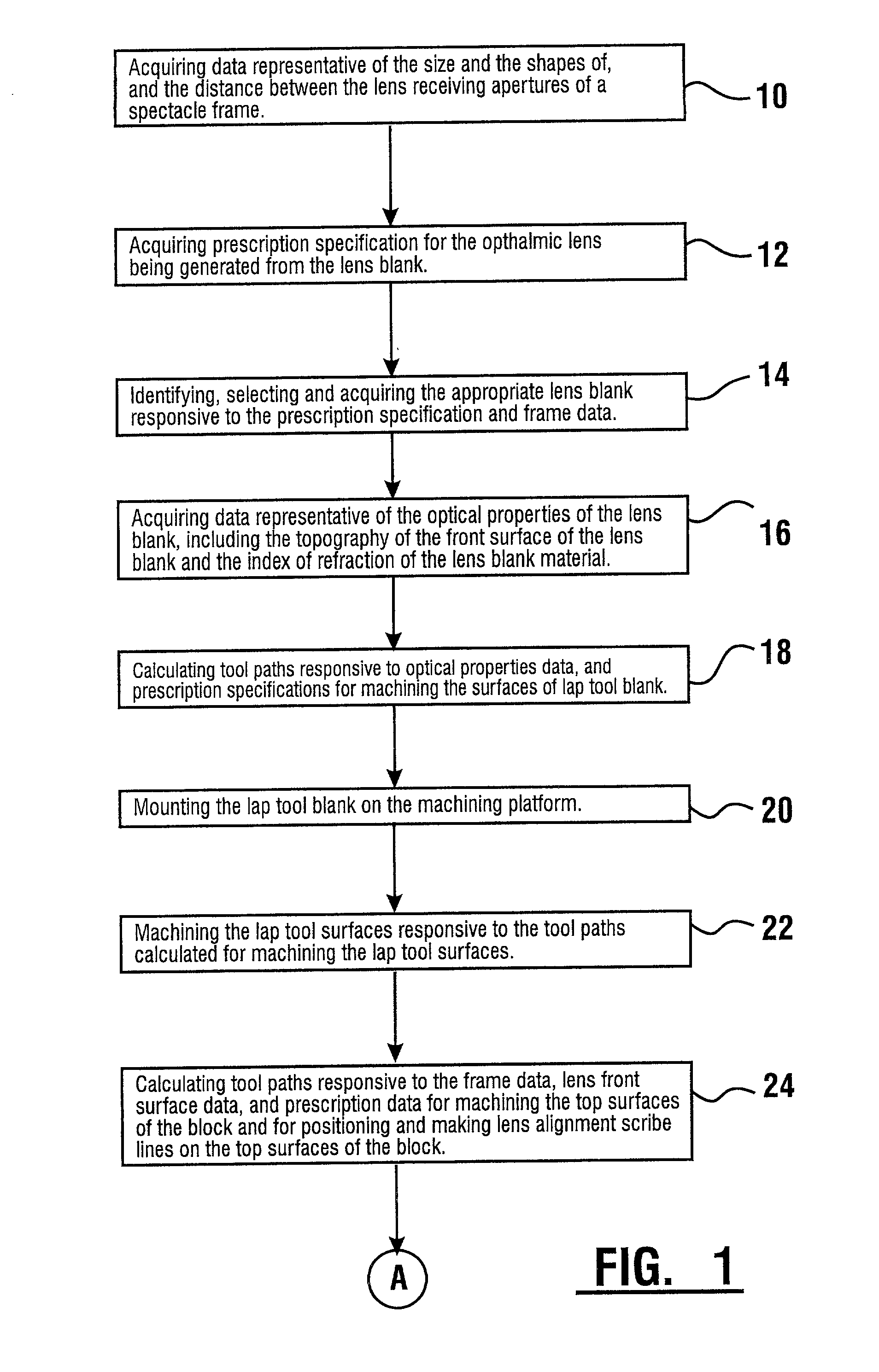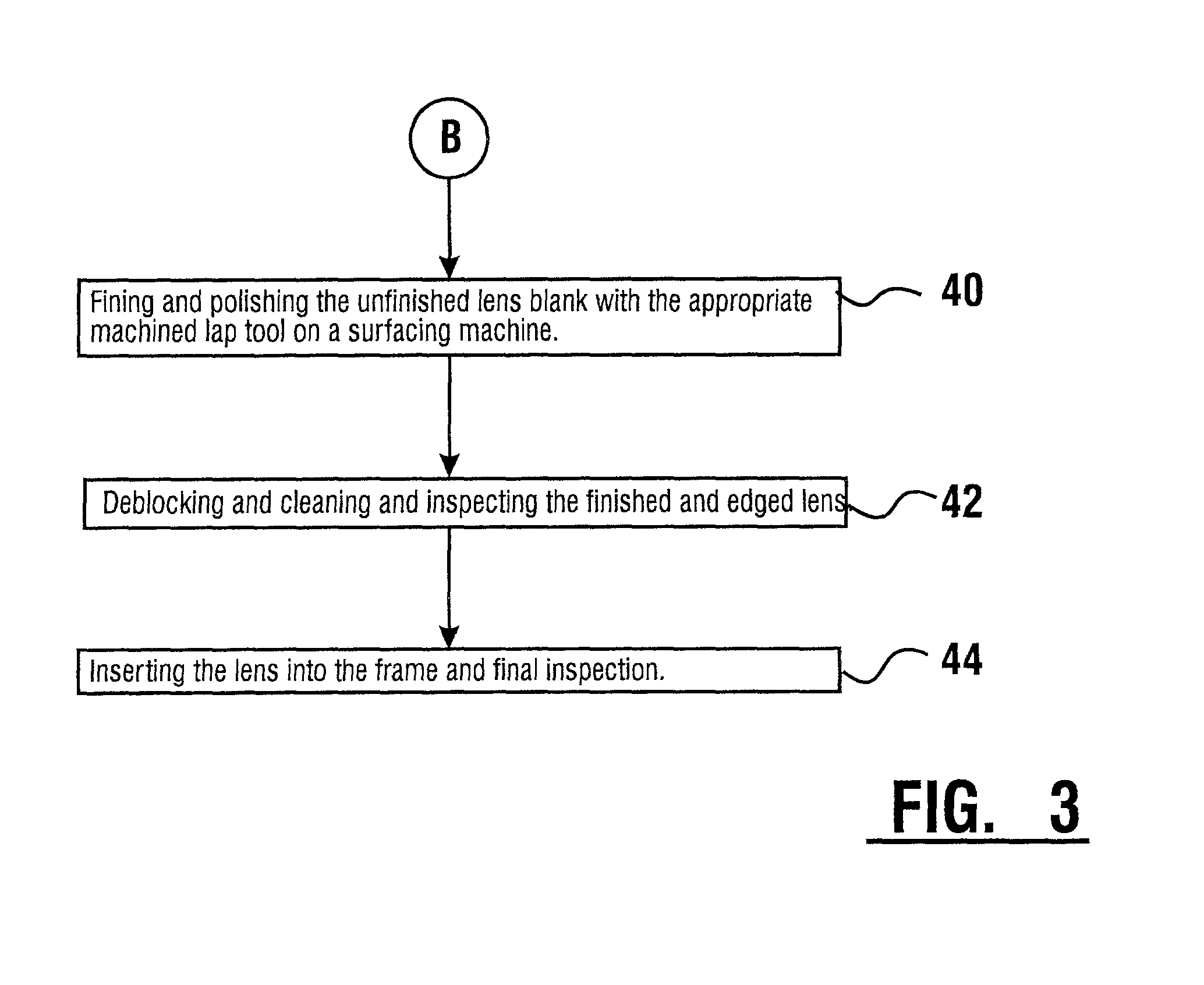System and method for ophthalmic lens manufacture
a technology of ophthalmic lenses and manufacturing methods, applied in the field of system and method for ophthalmic lens manufacture, can solve the problems of inability to justify the cost of acquiring and operating a surfacing laboratory, the inability of most of these entities to generate back surfaces of blanks, and the difficulty of hiring and training optical technicians to operate a surfacing laboratory, etc., to eliminate eliminate the effect of fabrication flaws, and minimize the transference of hea
- Summary
- Abstract
- Description
- Claims
- Application Information
AI Technical Summary
Benefits of technology
Problems solved by technology
Method used
Image
Examples
Embodiment Construction
[0079] Referring now to the drawings and particularly to FIGS. 1, there is shown therein exemplary method steps of the present invention for generating an ophthalmic lens. Here the exemplary method comprises the step 10 of acquiring or collecting and temporarily or permanently storing data about the size and shape of the lens receiving aperture of a spectacle frame or other mounting structure, or alternately about the finished lens circumference and frame shape. In the exemplary embodiment frame data is collected in the form of a plurality of planar points (x,y) relative to a planar coordinate system.
[0080] The exemplary method further comprises the step 12 of acquiring or collecting and temporarily or permanently storing prescription specifications for the desired ophthalmic lens being generated from the lens blank. For the present exemplary invention, the prescription specifications includes information which describes the optical characteristics for the finished ophthalmic lens a...
PUM
| Property | Measurement | Unit |
|---|---|---|
| width | aaaaa | aaaaa |
| surface topography | aaaaa | aaaaa |
| physical properties | aaaaa | aaaaa |
Abstract
Description
Claims
Application Information
 Login to View More
Login to View More - R&D
- Intellectual Property
- Life Sciences
- Materials
- Tech Scout
- Unparalleled Data Quality
- Higher Quality Content
- 60% Fewer Hallucinations
Browse by: Latest US Patents, China's latest patents, Technical Efficacy Thesaurus, Application Domain, Technology Topic, Popular Technical Reports.
© 2025 PatSnap. All rights reserved.Legal|Privacy policy|Modern Slavery Act Transparency Statement|Sitemap|About US| Contact US: help@patsnap.com



